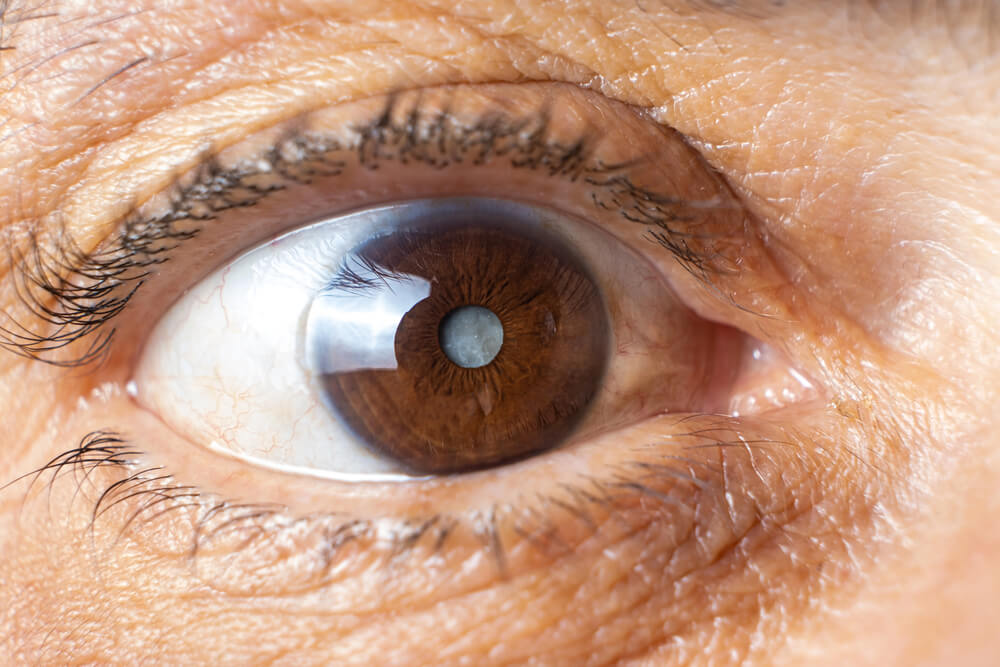
Cataracts develop gradually and may not immediately impact your day-to-day life. For many people, cataract surgery is eventually the solution, but it isn’t always the first step. There are several ways to manage mild to moderate cataracts without undergoing surgery right away. These options may help maintain clear vision for longer and improve your comfort in everyday situations.
Here’s a closer look at what you can consider if you’re not ready – or don’t yet need – to have cataract surgery.
Updating Your Prescription
As cataracts begin to form, they often change how your eyes focus light. You might notice that your current glasses or contact lenses don’t feel quite right anymore. A simple prescription change can help sharpen your vision and reduce blurriness in the early stages.
Your eye doctor can measure your vision and provide updated lenses that improve clarity, especially for reading or driving. While this doesn’t slow down cataract development, it can make daily tasks more manageable for the time being.
Brighter Lighting at Home and Work
People with cataracts often find it harder to see in dim lighting. Adding more lights around the home, particularly in reading areas, kitchens, or stairways, can make a noticeable difference. Choose warm but strong bulbs and keep the lighting consistent. Desk lamps and directional lights work well for focused tasks.
Even small adjustments like these can reduce eye strain and make tasks easier to handle.
Anti-Glare and Tinted Lenses
Light sensitivity is a common complaint for people with cataracts. You may find bright sunlight or oncoming headlights at night especially harsh. Wearing glasses with anti-glare coating can help cut down on reflections and soften brightness.
During the day, sunglasses that block UV rays can also reduce light sensitivity. Some people choose photochromic lenses, which adjust automatically based on the amount of sunlight around you. These can offer comfort outdoors without the need to constantly switch between glasses.
Magnifying Devices and Visual Aids
Reading small print may become difficult over time. Handheld magnifiers, magnifying glasses with built-in lights, and even electronic readers can help. There are also screen magnification options for phones and computers, often built into the device’s settings.
These tools help reduce frustration and support daily independence, especially if you’re not yet ready to move forward with a surgical option.
Lifestyle Adjustments That Support Vision
Small changes to your daily habits can help you feel more in control of your vision. Avoiding driving at night, planning outings during daylight hours, and organizing your environment with larger labels or contrasting colors can all make a difference.
You might also benefit from adjusting digital screen settings to increase font size or reduce blue light, especially in the evening. These habits won’t treat the cataracts themselves, but they can help you maintain a smoother routine.
Regular Monitoring with Your Eye Doctor
Even if you’re not experiencing serious discomfort, keeping up with scheduled eye exams is key. Cataracts usually progress slowly, and early changes can be tracked with simple exams. Your doctor will be able to tell you if your vision remains stable or if your cataracts are beginning to affect your safety or overall quality of life.
During each visit, you’ll likely go through several vision tests that can help your doctor determine if it’s time to revisit your care plan. This close monitoring is often enough to maintain your comfort until surgery becomes the recommended option.
Nutritional Considerations
While diet won’t reverse or stop cataracts, certain nutrients support overall eye health. Antioxidants found in fruits and vegetables, such as Vitamin C, Vitamin E, and lutein, can be beneficial for long-term vision support.
It’s worth asking your doctor whether you should consider changes to your diet or take supplements. Even though this won’t act as a direct treatment, a balanced approach to eye health can help you feel more proactive about your care.
Using Large-Print and Audio Alternatives
For those who enjoy reading, consider exploring large-print books or audiobooks. These are often available through public libraries or reading apps and can help you enjoy hobbies without eye strain.
Smartphones and tablets also offer voice control and text-to-speech tools. If cataracts are making reading difficult, using technology in this way can help bridge the gap while you monitor your symptoms.
When Are Alternatives No Longer Enough?
All of these options are helpful in the earlier stages of cataract development. However, if your vision continues to decline or you find that adjustments no longer make a difference, surgery may become the next step.
Cataract surgery is a common and safe procedure. It allows your doctor to replace your clouded lens with a clear artificial one. Many patients experience improved vision and go back to normal routines shortly after the operation.
The choice to move forward with surgery is personal and often based on how much cataracts are affecting your lifestyle. Your doctor can help you make this decision based on your current symptoms, needs, and expectations.
Alternatives to cataract surgery can provide useful relief in the early and moderate stages. From vision aids to small environmental changes, there are several ways to improve comfort and stay active while living with cataracts.
Keep in touch with your eye doctor, especially if you notice any changes to your sight. Regular exams, updated prescriptions, and simple at-home changes are often enough for many people to feel stable and confident in their day-to-day life.
Ready to take the next step toward clearer vision? Schedule a consultation with SuraVision today to discuss your options and learn more about Cataract Surgery. Call us at 713-730-2020 or book your appointment online!

